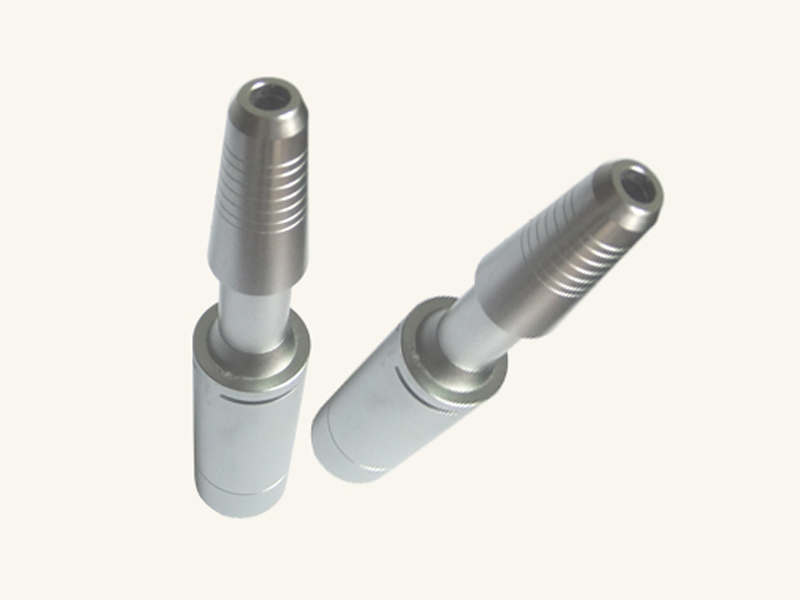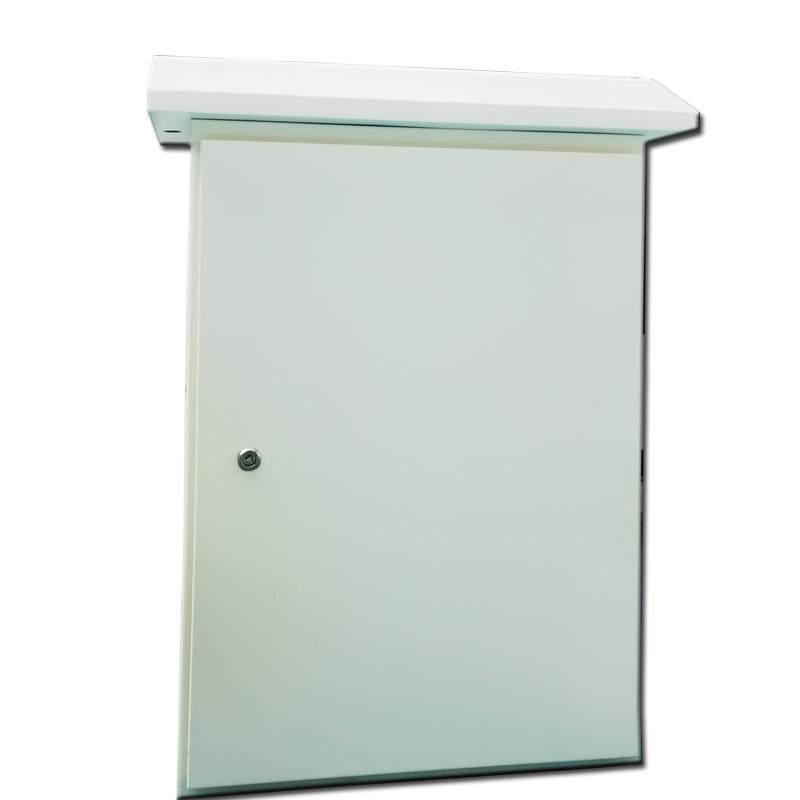CNC Machining (computer numerical control machining) is a method of machining using computer-controlled numerical control machine tools, which is widely used in the manufacture of parts in various industries. It controls the machine tool to cut along the specified path through a pre-written machining program, so as to realize the processing of the workpiece. The following will introduce the process flow of CNC machining.
First, design and develop the processing technology
Before CNC machining, it is first necessary to design the product and formulate the machining process. Designers use CAD (Computer-Aided Design) software to design the product according to the requirements and functions of the product. Then, the process engineer formulates the machining process according to the shape, material and machining requirements of the product, including selecting the appropriate cutting tool, cutting parameters, cutting path, etc.
Secondly, write the processing program
The machining program is the core of CNC machining, which contains the action instructions of the machine tool, cutting parameters, cutting path and other information. Writing the machining program requires the use of CAM (Computer Aided Manufacturing) software to convert the product design file into a machining program. When writing the machining program, it is necessary to consider the cutting performance of the material, the rationality of the process and other factors to ensure the efficiency and quality of the machining process.
Then, perform machine tool clamping and tool clamping
Before CNC machining, the workpiece needs to be clamped on the machine tool and the appropriate tool is selected for cutting. Machine tool clamping is the process of fixing the workpiece on the machine tool. It needs to consider the shape, size and machining requirements of the workpiece. Tool clamping is the process of installing the tool on the machine tool. It needs to select the appropriate tool type and specification, as well as the correct installation method. The accuracy and stability of machine tool clamping and tool clamping have an important impact on the machining accuracy and efficiency, so it needs to be carefully adjusted and checked.
Next, the processing operation is carried out
After the machine tool clamping and tool clamping are completed, the CNC machining operation can be started. The operator inputs the prepared machining program into the numerical control machine tool controller, and then through the controller‘s instructions, the machine tool cuts according to the path and speed specified by the program. During the machining process, the operator needs to monitor the machining status and adjust the cutting parameters and tools in time to ensure the machining quality and efficiency.
Finally, the processing inspection and finishing are carried out
After the completion of CNC machining, the workpiece needs to be inspected and trimmed. Inspection can be carried out by measuring tools and equipment to detect the size, shape and surface roughness to verify whether the workpiece meets the requirements. Trimming is the process of dressing, grinding or polishing the workpiece to eliminate possible machining defects and improve the accuracy and surface quality of the workpiece.
In summary, the CNC machining process covers the design and formulation of the machining process, the preparation of machining procedures, machine tool clamping and tool clamping, machining operations, and machining inspection and dressing. Each link requires accurate operation and strict control to ensure the efficiency of the machining process and the quality of the machined parts.
The development of CNC machining has provided high-precision and efficient parts manufacturing solutions for various industries. Compared with traditional manual operation and conventional machining, CNC plus tools have the following advantages:
1. High precision
CNC machining can achieve high-precision parts machining through the precise control of numerical control machine tools and high-speed rotation of tools. Machining accuracy can reach sub-millimeter or even higher levels to meet the requirements of complex parts.
2. High efficiency
CNC machining adopts computer programming and automatic control, which can realize automatic continuous machining, which greatly improves production efficiency. Reduce the time and workload of manual operation, and improve production efficiency and productivity.
3. Flexibility
CNC machining can perform flexible machining according to different product needs and design requirements. Just modify the machining program and adjust the tool to realize the processing of different parts, avoiding the trouble of replacing equipment in traditional machining.
4. Repeatability
CNC machining can achieve accurate cutting paths and machining parameters by writing machining programs and automated control, ensuring machining consistency and repeatability. It is not affected by the operator‘s technical level and experience, reducing the impact of human factors on machining quality.
5. Versatility
CNC machining can achieve a variety of machining operations, such as milling, turning, drilling, tapping, etc. A numerical control machine can complete a variety of machining tasks, reducing equipment investment and floor space.
In summary, CNC machining provides a high-efficiency, high-precision, flexible, repeatable and versatile part manufacturing solution. It is widely used in various industries, such as aerospace, automotive, electronics, medical equipment, mold manufacturing, etc.
In the aerospace field, CNC machining can fabricate aerospace components with complex shapes, such as turbine blades, engine parts, aerospace structural parts, etc. Due to the high precision and repeatability of CNC machining, the quality and performance requirements of the parts can be ensured.
In the automotive industry, CNC machining can produce automotive engine parts, chassis parts, body parts, etc. Through CNC machining, high precision and consistency of parts can be achieved, improving the performance and safety of automobiles.
In the field of electronics, CNC machining can produce electronic parts, circuit boards, casings, etc. Due to the high efficiency and flexibility of CNC machining, it can meet the rapid development and production needs of electronic products.
In the field of medical equipment, CNC machining can manufacture medical apparatus parts, artificial joints, dental equipment, etc. The high precision and repeatability of CNC machining can ensure the quality and safety of medical equipment.
In the field of mold manufacturing, CNC machining can fabricate various types of molds, such as injection molds, die-casting molds, stamping molds, etc. Due to the versatility of CNC machining, high-precision machining of complex molds can be achieved.
Overall, the development of CNC machining has provided high-efficiency, high-precision and flexible parts manufacturing solutions for various industries. It can automate machining through computer program control of machine tools, greatly improving production efficiency and product quality.
One of the advantages of CNC machining is high precision. Thanks to the use of computer program control, very precise machining can be achieved, achieving micron-level accuracy requirements. This is very important for some parts that require precise fitting, such as gears, threads, etc.
Secondly, CNC machining has high flexibility. By changing different tools and adjusting the machining path, parts of various complex shapes can be manufactured. Moreover, different products can be produced by simply modifying the program without redesigning and manufacturing new tooling.
CNC machining is also reproducible. Once the correct machining procedures and parameters are set, the machine can run continuously and maintain consistent machining quality without human intervention. This is very important for high-volume production, ensuring that each part meets the specified size and quality requirements.
In addition, CNC machining is versatile. By selecting different tools and machining methods, various machining operations such as drilling, milling, cutting, and turning can be realized to meet the machining needs of different parts. This makes CNC machining a multi-purpose manufacturing process.
Overall, CNC machining is an efficient, accurate, flexible and reliable part manufacturing solution. With the continuous development of technology, CNC machining will play an increasingly important role in various industries, promoting the progress and development of the manufacturing industry.


 Spanish
Spanish Arabic
Arabic Spanish Basque
Spanish Basque Portuguese
Portuguese Belarusian
Belarusian Japanese
Japanese Russian
Russian Icelandic
Icelandic Bulgarian
Bulgarian Azerbaijani
Azerbaijani Estonian
Estonian Irish
Irish Polish
Polish Persian
Persian Boolean
Boolean Danish
Danish German
German French
French Filipino
Filipino Finnish
Finnish Korean
Korean Dutch
Dutch Galician
Galician Catalan
Catalan Czech
Czech Croatian
Croatian Latin
Latin Latvian
Latvian Romanian
Romanian Maltese
Maltese Malay
Malay Macedonian
Macedonian Norwegian
Norwegian Swedish
Swedish Serbian
Serbian Slovak
Slovak Slovenian
Slovenian Swahili
Swahili Thai
Thai Turkish
Turkish Welsh
Welsh Urdu
Urdu Ukrainian
Ukrainian Greek
Greek Hungarian
Hungarian Italian
Italian Yiddish
Yiddish Indonesian
Indonesian Vietnamese
Vietnamese 简体中文
简体中文 Haitian Creole
Haitian Creole







